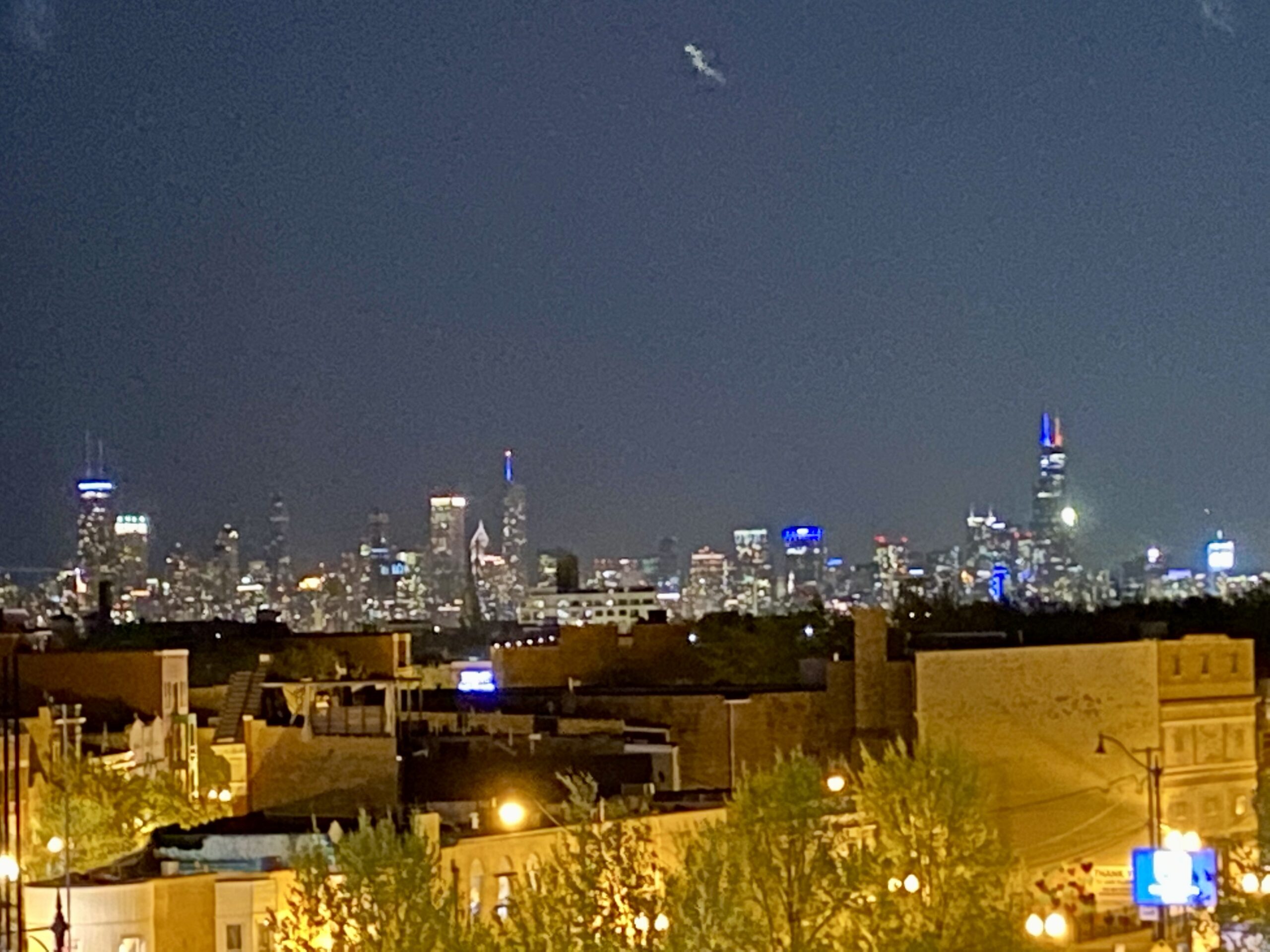 There’s only one time when I hesitate to advocate for a visit to Chicago. That’s when the Polar Vortex hits. Temperatures plunge below zero. Many services stop and transportation is iffy. Here is my winter tale of being frozen in place by the Polar Vortex in Chicago.
There’s only one time when I hesitate to advocate for a visit to Chicago. That’s when the Polar Vortex hits. Temperatures plunge below zero. Many services stop and transportation is iffy. Here is my winter tale of being frozen in place by the Polar Vortex in Chicago.
I position myself at a front window while the Polar Vortex begins dropping its windy, bitter cold air. This is not my first time experiencing Chicago’s extreme weather. The city averages seven days of below zero temperatures annually. A bone-chilling -27°F in 1985 set a record. I was young and single then. During the winter of 2013-14 the city endured 23 days of subzero temperatures. Aging with the Artic air feels different. I’m fretting. Everything is frozen in place. Shiny slivers of ice encase tree branches. Plowed snow mounds reach above my head.
The warnings have been coming for days. National media headlines are announcing an approaching mass of cold air that will “blast,” “threaten,” “seize,” “attack” and “invade” us. Airplane flights and scheduled trains are cancelled. Businesses close. Schools close. The library closes. And the bank. No garbage is collected. However, the sky is blue. The sun is bright. Wispy clouds match the color of snow.
From my breakfast nook, the quiet stillness outside shifts from serene to eerie. No one is heating up a car or carrying a backpack to the bus stop. The dog walkers are absent. As is my neighbor Maria, who often calls me ‘dude’ to my chagrin. Middle schooler Alfred doesn’t pass by swinging his arms and whistling a song only he knows. Dan the mailman doesn’t rouse my dog.
Had I been stranded on a deserted street I would start praying. But I am inside a warm house with a community of neighbors nearby. I want more information on what to expect. I don’t care as much about temperature as I do about the wind chill. That’s what we feel. At 6:00 am the temperature is -22° Fahrenheit. The wind chill is -50°F. For our weather to become this extreme, something prompted its emergence. The culprit is often wind. Wind is both a rainmaker and a flame thrower.
Living in the Windy City, I start reading about the science of wind on my phone. It’s created when air masses of different temperatures interact. Cold air tries to snuggle up to warm air, creating pressure. The bigger the temperature difference, the faster air flows. Unlike in my house where heat rises, outside air closest to the ground is warmest and gets colder the higher up it goes. As any mountain climber knows.
Tree branches sway towards my window as the wind picks up. Relax, I tell myself. I inhale the aroma of my slow-cooked chicken soup wafting through the house. I decide to go outside to walk my dog. I dress in layers – warm socks, silk tights under my pants, wool sweater over a t-shirt. I add fury boots, a down-filled coat, scarf, mittens and a hat that covers my ears. But my arctic encounter is cut short. The wind is a butcher knife slicing into my forehead, giving me an instant headache. My dog jerks one leg up and trots on the other three before I turn back inside. Nature bears no intent, so no blame can be cast. 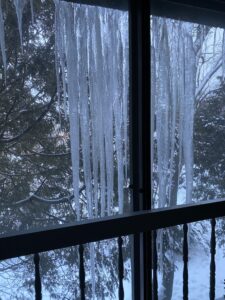
I don’t remember the harsh winter of 1985 as much as I do the spring that followed it. My thoughts turn to spring as I continue reading about the weather. I see some beautiful images in the newspaper of a sea fog over Lake Michigan that dims Chicago’s skyline, and rail workers using blowtorches to heat up switches for the commuter trains. A fire and ice drama.
The jet stream’s shifting shuffle of warm and cold air causes its boundary to buckle, much like train tracks do in extreme heat or cold. The stream sags toward the equator bringing pockets of polar air with it. Into the Midwest. I jump at hearing a loud pop sound outside. It’s too cold for icicles to be falling. I learn via social media that the sound is underground frozen soil cracking.
Snowflakes start to fall. Something about how they are dropping makes me think of a snow-globe I bring out each year for Christmas. The flakes outside float, like the puffs that drift off cottonwood trees in the summer. They are not plunging, plummeting, crashing, diving, dumping, or pouring. They are fluent in the way of air and wind.
Hours pass until darkness blindfolds the sky. There’s nothing more to see outside my window. The frigid air soon retreats to its Arctic home. A reinvigorated jet stream brings unseasonably warm weather to the Midwest. I rejoin the outside world. A 16°F temperature feels warm. Neighbors return to their routines. A local clothing shop has a “Polar Vortex Sale” offering 20% off. The wonders and welcome of Chicago seldom cease.

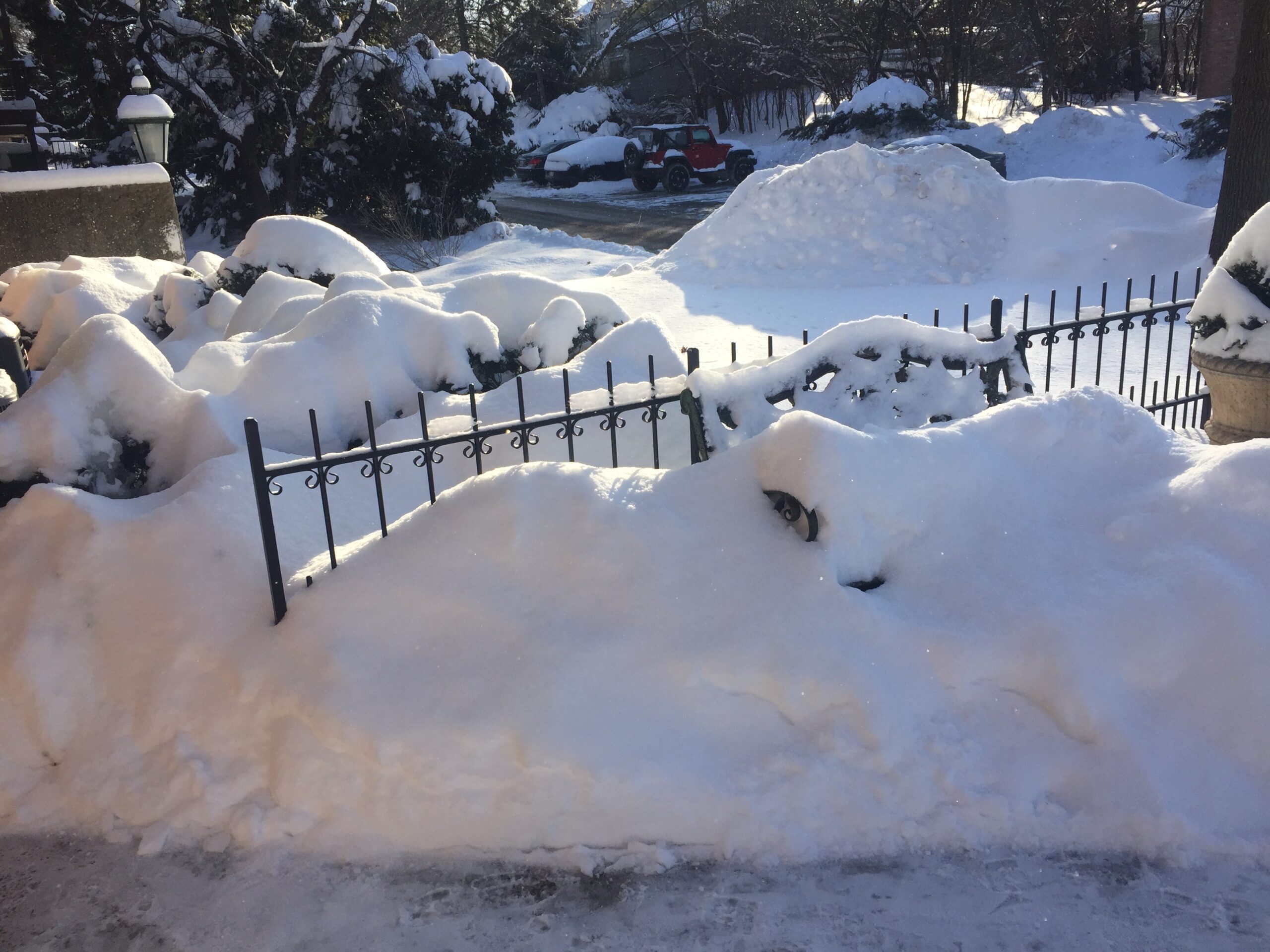
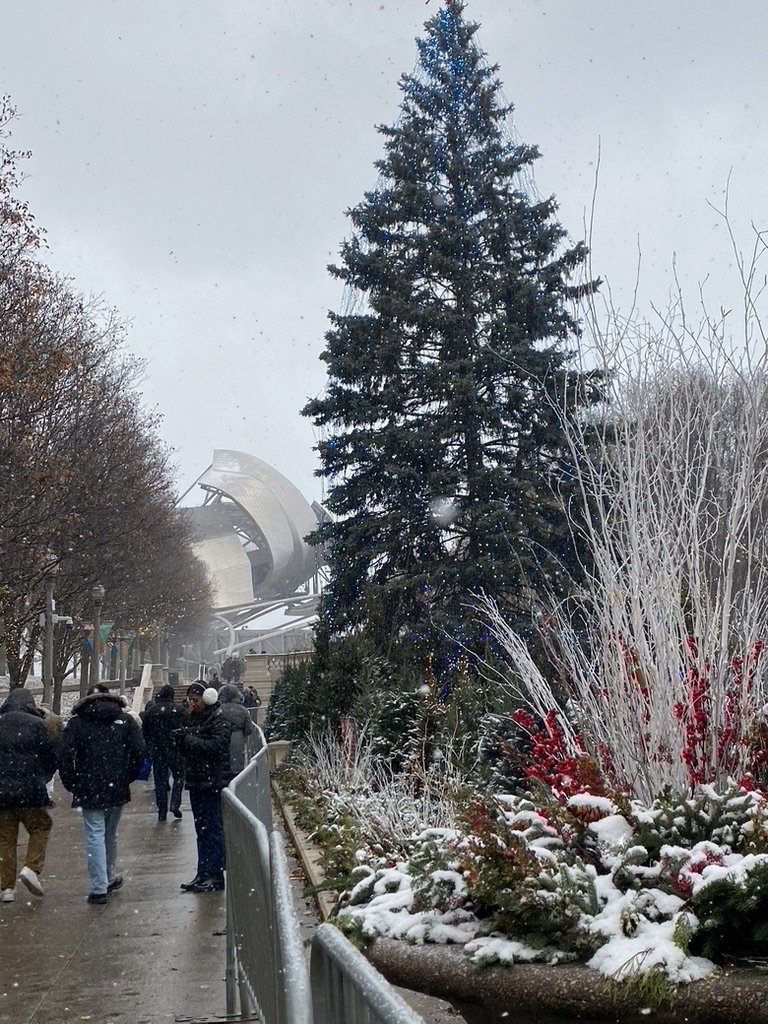
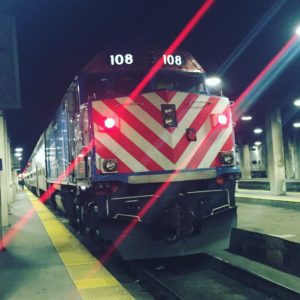 Heading toward Chicago on a Metra commuter train I didn’t notice the woman who sat down beside me until she said, “I hope you don’t feel crowded.” She had pushed a large piece of luggage toward her legs to clear the aisle. There was a Cub’s game that day and the train was packed with fans. The woman also held a small backpack. She was going somewhere beyond a day trip to Chicago.
Heading toward Chicago on a Metra commuter train I didn’t notice the woman who sat down beside me until she said, “I hope you don’t feel crowded.” She had pushed a large piece of luggage toward her legs to clear the aisle. There was a Cub’s game that day and the train was packed with fans. The woman also held a small backpack. She was going somewhere beyond a day trip to Chicago.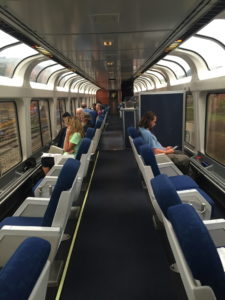 When you’ve been on a train for many hours the Lounge car offers a get-away. During the day, people take in the sites through the large glass windows that arch up to the train’s roof. If you don’t like your seatmate or want a window seat, the Lounge car is the place to go. Retired couples play cards. Families with young children spread out game pieces. College kids lean back with their knees tucked to their chests listening to music through their ear buds. Photographers click their cameras. I didn’t sense a natural way to interact with the people in the Lounge car that day. With invoices and a checkbook laid out in front of her, I wouldn’t interrupt a woman who was busy paying her bills.
When you’ve been on a train for many hours the Lounge car offers a get-away. During the day, people take in the sites through the large glass windows that arch up to the train’s roof. If you don’t like your seatmate or want a window seat, the Lounge car is the place to go. Retired couples play cards. Families with young children spread out game pieces. College kids lean back with their knees tucked to their chests listening to music through their ear buds. Photographers click their cameras. I didn’t sense a natural way to interact with the people in the Lounge car that day. With invoices and a checkbook laid out in front of her, I wouldn’t interrupt a woman who was busy paying her bills.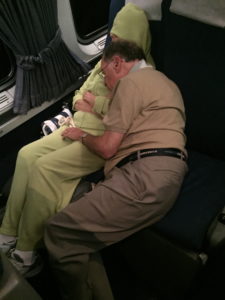 Time doesn’t matter much while on a passenger train, but it was late. I walked slowly back to my seat balancing my stride through two darkened cars. I stared at the bodies at rest. Their slumber postures showed mouths opened yet silent, heads bowed as if in prayer, arms around each other or dangling in the aisle. A woman’s head rested across her seat into the aisle as if ready for a guillotine. There are no seat belts on trains, so whatever position works is the one a tired passenger will take.
Time doesn’t matter much while on a passenger train, but it was late. I walked slowly back to my seat balancing my stride through two darkened cars. I stared at the bodies at rest. Their slumber postures showed mouths opened yet silent, heads bowed as if in prayer, arms around each other or dangling in the aisle. A woman’s head rested across her seat into the aisle as if ready for a guillotine. There are no seat belts on trains, so whatever position works is the one a tired passenger will take.